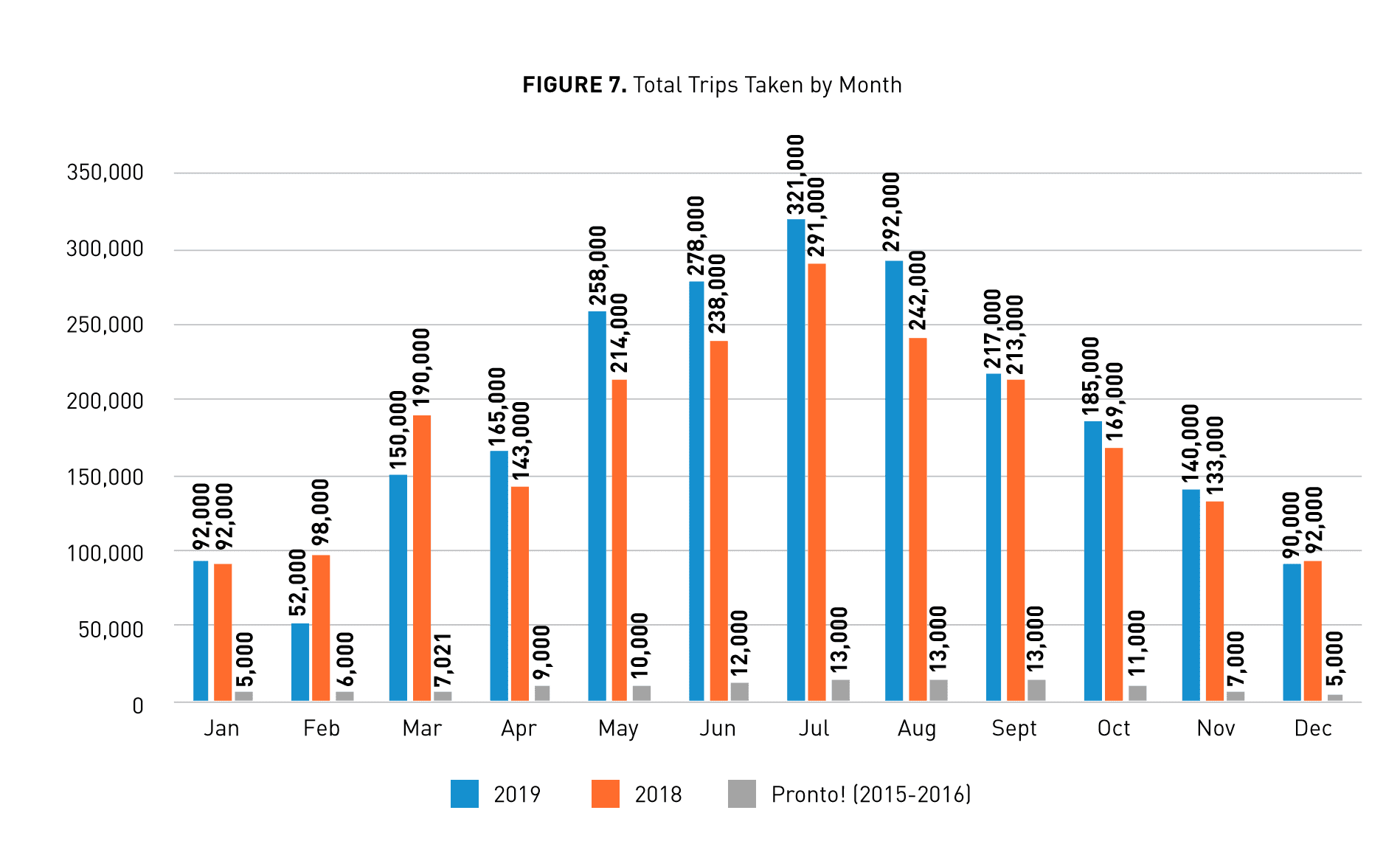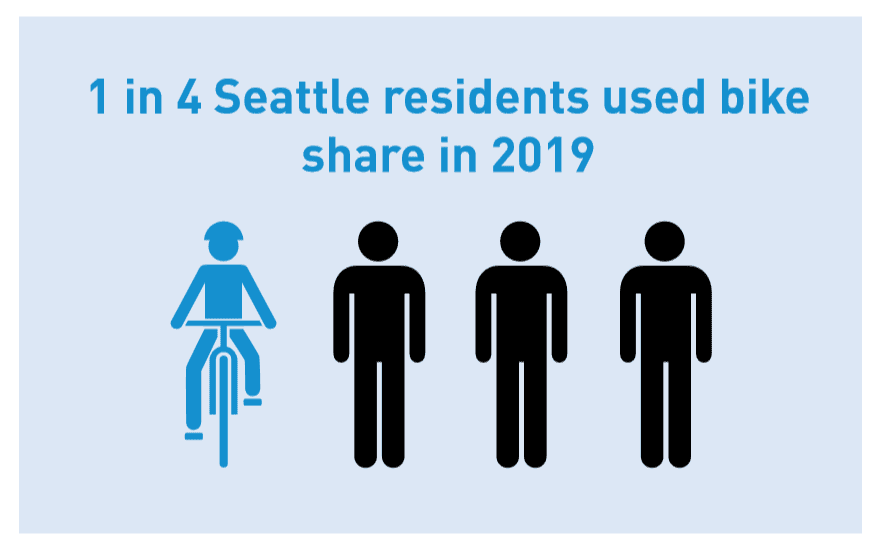
Last year, Seattle continued to build one of the most robust multi-modal transportation systems in North America.
In 2017, Seattle was the first major city to launch a free-floating bike share program where bikes don’t have to be parked at bike share racks. Three years later, Seattle continues to lead as residents and visitors rely on bike share as a convenient, dependable transportation option.
Despite having one less bike share vendor in 2019, we increased ridership and improved outcomes across nearly all the metrics we’d put in place to guide and shape this program.
This strongly indicates that our bike share program will continue to play a key role in our efforts to deliver a transportation system that provides safe and affordable access to places and opportunities.
The free-floating bike share program works so well in Seattle because we’ve invested in bike infrastructure across the city – including building a center city bike network, neighborhood greenways, and increasing bike parking by more than 1,500 spaces in the last year. But also, it works well because we’ve set ambitious goals that we’re working with bike share companies to hit. Our goals aren’t just around increasing riders, but also around bike parking, access to bikes across the city, and bike companies’ timeliness in moving improperly parked bikes.
We’re proud to share our 2019 Free-Floating Bike Share Evaluation Report that gives an in-depth look at what we did to reach many of our goals and how we’ll continue to build on the program in 2020, including:
- Launching a new way for people to report poorly parked bikes on our Find it Fix it app
- Mandating that riders take photos of where they leave the bikes after rides to ensure they are not blocking sidewalks, curb ramps, or building entrances
- Fine-tuning our data analysis so we can better hold ourselves and bike share companies accountable.
Here’re some highlights from the report:

People took 2.2 million trips & traveled 2.5 million miles on bike share last year.
There’s a strong demand for free-floating, electric-assist bike share. Ridership remained 10 to 20 times higher than when we were operating Pronto!, Seattle’s previous station-based bike share system.

Mobility options like bike share allow residents to live car free and still get to where they need to go.
Almost half (45%) of bike share users said they choose bike share because it’s better for the environment. At least 33% of the 2.2 million bike share trips taken in 2019 might have otherwise been taken in a motor vehicle.

As expected, bike share was most popular during Seattle’s sunny months.
However, there was consistent ridership throughout the winter – including 52 thousand rides in February, Seattle’s snowiest month on record for the past 50 years.

Around a quarter of Seattleites ages 13 and above tried bike share at least once in 2019.
The majority of riders were aged 25-44 and there was an increase in women riders in 2019 compared to 2018.

Bike share enhances Seattle’s multi-modal transportation system.
People use bike share to get to work, school, errands, or to get home. They also use it to get to or from other transit options. Our survey shows 35% of people used bike share to get to transit, and our trip data suggest that about 75% of trips started or ended within a very short walk to a transit stop.

We installed 1,515 bike parking spaces this year.
These new parking spots help provide safe locations for riders – including non bike share riders – to park their bike after their trip. 78% of the parking corrals we installed last year are next to crosswalks and have the added benefit of increasing pedestrian visibility to make these crossings even safer.

Proper bike parking increased during the second half of the year.
We helped drive higher levels of compliance through new bike parking infrastructure that enabled riders to better follow parking rules and resulted in fewer bikes blocking sidewalks, curb ramps, and building access.
There’s still room for improvements, however, and we’re working with bike share companies to improve our approach to proper parking education and enforcement for 2020. For example, bike share companies will include bike parking spots on their maps so riders have an easier time finding parking, and riders will be asked to take photos of their bikes after rides.
Since March 2020, you now can easily report poorly parked bikes through our Find it Fix it app, online, and by calling 684-ROAD (206-684-7623)
The success of the free-floating bike share program over the past few years gives us hope that it’s going to be a mainstay in Seattle and a vital part of our transportation system into the future
Lime stopped operating at the end of 2019, however Seattle is still happy to have Jump’s red e-bikes helping to keep Seattle moving in 2020.

During the current COVID-19 pandemic, bike share remains an option for essential travel.
Bike Share can be used to safety take advantage of the 2.5 miles of existing neighborhood greenways we are converting into Stay Healthy Streets this Saturday.
These car free streets were selected to amplify outdoor exercise opportunities for areas with limited open space options, low car ownership, and routes connecting people to essential services and food take out. Stay Healthy Streets are closed to through traffic – but not residents or deliveries – 24 hours a day, seven days a week for the duration of the emergency or until otherwise noted by the City of Seattle. For more details read our blog post.
Jump is disinfecting handlebars, seats, seat adjustment levers, and screens every time the bikes are serviced. They are also offering free rides for essential workers. Employers can reach out to Jump at SeattleSupport@Jump.com to receive codes that their essential employees can use for free 30-minute rides.